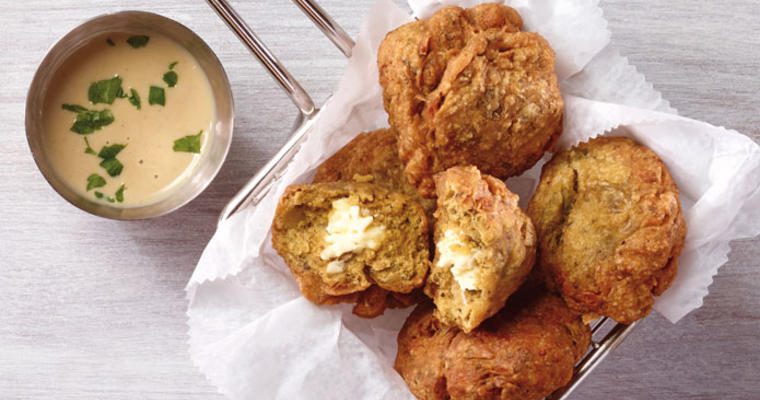There’s no specific marker for it on a trend map, but global flavor, mashups, handhelds, sharing plates and vegetarian/vegan/veg-centricity intersect in a sweet spot of opportunity for operators seeking to add excitement and differentiation to their menus. The opportunity comes from falafel.
This spicy and popular Middle Eastern street-food fried fritter is prepared with reconstituted ground dried chickpeas and sometimes fava beans. Falafel is a shape-shifter and a palate-pleaser suited to many spots on the menu in multiple dayparts. Crispy on the outside, fluffy on the inside, unapologetically vegetarian and always satisfying, falafel also delivers craveable mouthfeel. In spite of being fried, it also appeals to many younger diners who consider it to have a health halo because it’s vegetarian. Nonetheless, it also beckons to dedicated meat-eaters as it is so adaptable and, with a bit of meat added to the mix, moves easily between vegetarian and carnivore worlds.
“Falafel has a reasonable food cost, it’s easy to prepare and it can be the base of many flavor-forward applications,” says Gordon Food Service® Corporate Consulting Chef Gerry Ludwig, CEC. “It appeals to millennials and Gen-Z diners who want meatless protein items, but one of the main reasons falafel is so popular is that it’s so delicious.”
Full-flavored falafel opportunities
Finding ways to fit falafel into a menu is easy. Not sure if it will work for your customer base? Test it with specials and limited-time offers.
Given its versatility and flavor, it’s no surprise that falafel is finding its way onto more and more menus; dedicated falafel shops abound, especially in major cities. Don’t worry that other operators have gotten a head start; the good news is that their efforts have made falafel familiar—and that opens doors for you to put your own spin on it.
Appetizers, small-plates, sharing-plates, salads. Shape falafel into rustic, oval egg shapes with somewhat squared off ends (this shape, versus round balls, maximizes the crispy crust area) for appetizers, shareable platters and salad toppers.
Sandwiches. Create golf-ball-size falafel rounds or flattened patties; stuff them into pita bread or shape falafel into cylinders for flatbread wraps. Add lettuce, tomatoes, tahini and hummus, or Greek yogurt infused with cayenne pepper and chopped fresh mint. Stuff falafel balls with feta cheese and serve with shakshouka sauce on flatbreads such as naan or paratha.
Falafel burgers/sliders. Form falafel into thick, flattened patties for veggie or vegan burgers. Or, for the best of both worlds, go truly veg-centric and use small amounts of meat—e.g., small bits of diced, cooked pork belly blended with the falafel, or top cooked falafel burgers with pulled pork or shaved lamb. Or, menu a trio of mini-burgers for a falafel slider sampler.
Falafel “steaks.” Shape falafel into generous-size patties for a vegetarian entrée topped with lightly sautéed or roasted seasonal vegetables and piquant sauces.
Global mashups. Think outside the classic falafel spicebox—onion, garlic, parsley and cumin—and embrace the global-mashup trend. Coat falafel balls with sesame seeds, fry and then finish with a Korean BBQ sauce glaze. Or menu a falafel schnitzel topped with craft-beer sauerkraut. There’s practically no limit to the ways you can menu your own signature falafel mashups, so use your imagination.
Breakfast. Add falafel mix to waffle batter for a savory, buzz-generating eye-opener.
Breadings. Give everything fried—from french fries to chicken—a falafel touch. Use the standard breading procedure, suggests Gordon Food Service Corporate Test-Kitchen Chef Ed Westerlund, CEC: Dredge the items to be breaded into flour, then egg wash and then the falafel mix, shaking off excess before placing into a heated 350°F deep-fryer to cook.
The bottom line? Falafel, like burgers, tacos and other street-friendly comfort food, is popular because it’s simple, delicious and open to infinite variations.











